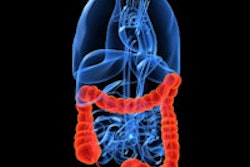Dear CT Insider,
Now that CT lung cancer screening is reimbursed by Medicare and private payors, it's reasonable to ask how many doctors will be referring their patients for it. The answer isn't obvious, as some clinicians remain wary of the risks and skeptical of the costs, regardless of the evidence.
Pulmonologists, for example, are a key physician group that will need to buy into the scans if screening is to save as many lives as possible. Are they on board? Yes and no. Find out more in this issue's Insider Exclusive.
Also, can lung cancer screening really save as many lives as possible when some smokers assume that their negative screening exams give them a clean bill of health, allowing them to continue smoking indefinitely? Yikes.
In colon cancer screening, optical colonoscopy's polyp miss rate has been hard to nail down due to limitations of prior studies. But radiologists who have performed thousands of CT colonography exams are starting to learn more about optical colonoscopy's shortcomings -- and the picture isn't pretty. Click here to find out what gastroenterologists are likely to detect -- and miss -- when they screen patients the traditional way.
Iodinated contrast media for CT has generally avoided the high-profile controversies that have plagued gadolinium-based MRI contrast. Indeed, studies have shown low rates of contrast-induced nephropathy (CIN) following contrast-enhanced CT scans. But for those few patients who do experience CIN, the long-term outlook is troubling, according to a new study from Indiana University.
In an era when cost-cutting is king, researchers from NYU Langone Medical Center say they can accurately predict resource utilization down the line from initial appendix CT studies, a hypothesis proved with long-term follow-up. Is their approach a potential powerhouse that could improve patient outcomes and reduce costs in a wide variety of patients and diseases? Find out more here.
Speaking of costs, doctors at Brigham and Women's Hospital in Boston believe they've found a simple but surefire way to ensure that more CT scans are performed within appropriateness guidelines. Find out how they did it by clicking here.
On the reimbursement end, some radiologists are getting caught up in Medicare reimbursement rules that leave them unpaid or underpaid for 3D reconstructions. But there are paths to maximizing reimbursement -- and tips you can learn by clicking here.
Finally, several studies have trumpeted CT's lower costs and faster discharge rates for chest pain patients compared to standard care. But when CT coronary angiography was compared with SPECT myocardial perfusion imaging, researchers from Montefiore Medical Center in New York City found that outcomes were remarkably similar.
We invite you to scroll through the links below for the rest of the news in radiology's go-to modality, right here in your CT Community.




















